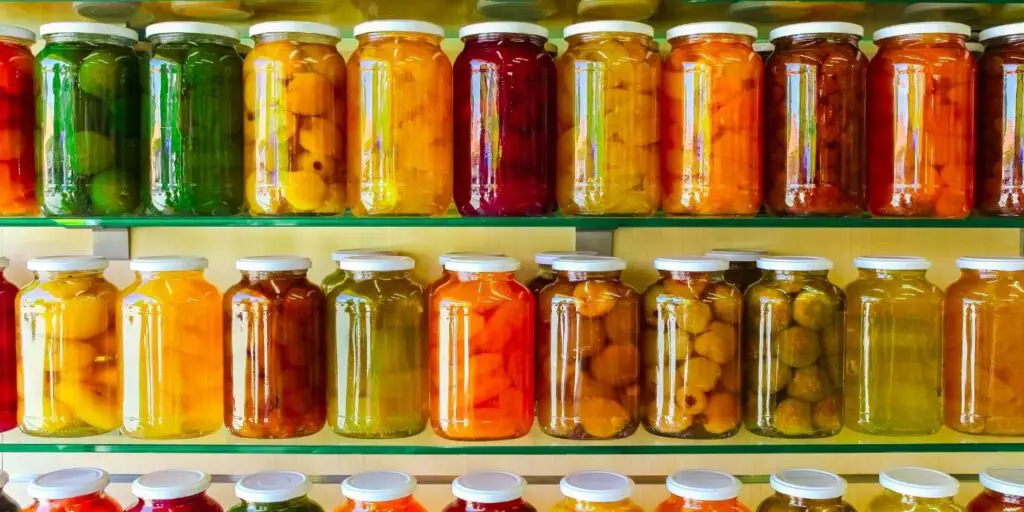Preparing for a potential doomsday scenario requires a thoughtful and strategic approach. To successfully navigate the uncertain times ahead, you must stockpile essential supplies that can sustain you and your loved ones.
But what exactly are these supplies? From food and water to medical supplies and self-defense tools, there are several key items that should be on your radar.
So, buckle up and brace yourself, because in this discussion, we will delve into the crucial supplies you need to survive and thrive in the face of an apocalypse.
Key Takeaways
- Stockpile non-perishable food and water supplies, including canned goods, dried fruits, vegetables, grains, and legumes. Aim to store at least two weeks’ worth of food and one gallon of water per person per day.
- Include medical supplies such as first aid kits, over-the-counter medications, and any necessary prescription medications.
- Consider shelter options like tents or DIY shelters, and have sleeping bags, blankets, and warm clothing on hand. Also, ensure you have a reliable source of lighting and heating.
- Include non-lethal self-defense tools like pepper spray, stun guns, tactical flashlights, and personal alarms for added security.
Food
When preparing for a doomsday scenario, it’s essential to stockpile an ample supply of food. Food storage is crucial to ensure your survival during times of crisis. To begin, you must consider the type of food you store. Opt for non-perishable items such as canned goods, dried fruits, and vegetables, as well as grains and legumes that have a long shelf life. These will provide you with essential nutrients and sustained energy.
Meal planning is another vital aspect of food storage. Create a well-balanced menu that includes a variety of food groups to meet your nutritional needs. Consider incorporating foods that require minimal cooking or can be eaten straight from the can. This will save you time and resources. Additionally, rotate your food supply regularly to prevent spoilage and ensure freshness.
To maximize your food storage, it’s essential to organize your supplies efficiently. Keep track of expiration dates, and use the oldest items first to minimize waste. Store your food in a cool, dry place, away from direct sunlight, pests, and moisture. Consider investing in sturdy containers and labeling them for easy identification.

Water
Now let’s shift our focus to the next essential aspect of preparing for a doomsday scenario: water.
In an emergency situation, access to clean and safe drinking water is crucial for your survival. To ensure you have an adequate supply, consider investing in water filtration systems.
Water filtration is an essential part of emergency preparedness. It allows you to purify water from various sources, such as rivers, lakes, and even rainwater. A reliable water filtration system can remove harmful contaminants, bacteria, and viruses, making the water safe for consumption.
When choosing a water filtration system, look for ones that are portable, easy to use, and have a long lifespan. There are many options available, including portable water filters, gravity filters, and even straw filters. Consider your specific needs and the number of people you need to provide for when selecting the right system for you.
In addition to water filtration, it’s also wise to store an adequate supply of water. The general guideline is to have at least one gallon of water per person per day for drinking and sanitation purposes. Aim to store enough water to last you and your family for at least two weeks.
Medical Supplies
To ensure your preparedness for a doomsday scenario, it’s crucial to stockpile essential medical supplies.
In times of crisis, access to medical care may be limited or nonexistent, making it essential to have the necessary supplies on hand to address any health issues that may arise.
First aid kits are a fundamental component of any medical supply stockpile. These kits should include items such as bandages, antiseptic wipes, adhesive tape, scissors, and tweezers.
Additionally, it’s advisable to include over-the-counter medications for pain relief, fever reduction, and common ailments like cold and flu.
However, it’s also important to consider alternative medicine options. Natural remedies such as herbal teas, essential oils, and homeopathic remedies can provide relief for various conditions. It’s recommended to research and stockpile alternative medicine supplies that align with your beliefs and preferences.
Shelter
For a doomsday scenario, it’s essential to prioritize securing shelter. In such situations, you need to have options for emergency shelter. Here are some practical and informative tips to help you prepare.
Firstly, consider emergency shelter options that are easy to set up and provide protection. Tents are a popular choice as they’re portable, lightweight, and offer shelter from the elements. Look for durable, waterproof tents with enough space for your family and essential supplies.
Another option is a portable emergency shelter, such as a pop-up shelter or a portable cabin. These can provide quick and reliable shelter during emergencies. Look for ones that are easy to assemble and have sturdy construction.
If you have the skills and resources, building a DIY shelter is a great long-term solution. Consider building an underground bunker or a fortified structure made from natural materials like logs and earth. Ensure that your shelter is hidden and secure to protect yourself from potential threats.
Remember to stock up on supplies like sleeping bags, blankets, and warm clothing to stay comfortable in your shelter. Additionally, having a reliable source of lighting and heating, such as solar-powered lanterns and portable stoves, is crucial.
Self-Defense Tools
Securing your safety in a doomsday scenario requires being prepared with effective self-defense tools. When it comes to personal safety, it’s important to have non-lethal weapons that can help you protect yourself without causing permanent harm. Here are four essential self-defense tools to consider adding to your stockpile:
- Pepper Spray: This compact and easy-to-use spray is an excellent option for self-defense. It can temporarily disable an attacker by causing severe eye and respiratory irritation, giving you time to escape and seek help.
- Stun Gun: A stun gun delivers a powerful electric shock to immobilize an assailant temporarily. It provides a reliable and non-lethal means of self-defense, allowing you to protect yourself from physical harm.
- Tactical Flashlight: A tactical flashlight serves a dual purpose. It can blind an attacker temporarily, disorienting them and giving you an opportunity to escape. Additionally, many tactical flashlights come with built-in features like sharp edges or striking surfaces, making them useful for self-defense in close combat situations.
- Personal Alarm: A personal alarm is a small, portable device that emits a loud and piercing sound when activated. It can attract attention from others nearby and startle potential assailants, providing you with a valuable opportunity to escape.
Communication Devices
Now that you have secured your self-defense tools, let’s move on to the next important aspect of preparing for a doomsday scenario: communication devices.
In a world where traditional means of communication may be disrupted, it’s crucial to have a reliable way to stay connected with the outside world.
One essential communication device to consider is a wireless communication system. These systems allow you to transmit and receive messages without the need for landlines or cell towers. They operate on specific frequencies and can cover a wide range of distances, making them ideal for long-range communication during emergencies.
Another important device to have in your stockpile is an emergency radio. These radios are specifically designed to receive broadcasts from emergency services, government agencies, and news stations, providing you with vital information in critical situations. Look for radios that have multiple power options like solar, hand crank, or battery-operated, ensuring that you can keep them running even without access to electricity.
Hygiene and Sanitation Products
To maintain cleanliness and prevent the spread of diseases, it’s essential to include hygiene and sanitation products in your doomsday stockpile.
Here are four items that you should consider including:
- Hand sanitizer: In a doomsday scenario, access to clean water and soap might be limited. Having hand sanitizer with at least 60% alcohol content will help you maintain hand hygiene and kill harmful germs.
- Disinfectant wipes: These wipes are handy for cleaning surfaces and objects that may harbor bacteria or viruses. Make sure to use them regularly on high-touch areas like doorknobs, countertops, and toilets.
- Toilet paper: Stock up on toilet paper to ensure you have an adequate supply for personal hygiene needs. Consider storing a few months’ worth to be on the safe side.
- Trash bags: Proper waste management is crucial during a doomsday scenario to avoid the accumulation of garbage and potential health hazards. Have a good supply of sturdy trash bags to dispose of waste properly.
Remember to follow safety precautions while using these products, such as avoiding contact with eyes and keeping them out of reach of children.
Essential Documents and Cash
Having essential documents and cash readily available is crucial for preparedness in a doomsday scenario. In times of crisis, it’s important to have easy access to important information and financial resources.
Start by creating a waterproof and fireproof document folder to store essential documents such as identification cards, passports, birth certificates, and social security cards. Make copies of these documents and keep them in a secure location, separate from the originals.
Additionally, compile a list of emergency contacts including family members, friends, and local authorities. Store this list digitally and print a hard copy to have on hand.
In terms of cash, it’s wise to have a stash of small bills in case electronic transactions become unreliable. Aim to have enough cash to cover basic expenses for at least a week.
Remember to regularly update your documents and emergency contacts as needed. By having these essential documents and cash readily available, you’ll be better prepared to navigate any doomsday scenario that may come your way.
Frequently Asked Questions
How Do I Determine the Appropriate Amount of Food and Water to Stockpile for a Doomsday Scenario?
You can determine the right amount of food and water for a doomsday scenario by considering the number of people, their daily needs, and the estimated duration of the event. Long-term storage solutions like canned goods and water filters are essential.
Are There Any Specific Medical Supplies That Should Be Prioritized for a Doomsday Scenario?
When preparing for a doomsday scenario, it’s crucial to prioritize medical supplies. First aid kits and antibiotics should be at the top of your list. These will help you address injuries and diseases that may arise.
What Are Some Alternative Shelter Options to Consider in a Doomsday Scenario?
Consider alternative shelter options like underground bunkers or mobile homes. These can provide protection and mobility in a doomsday scenario. Prioritizing your safety and adaptability is essential when preparing for the worst.
Are There Any Legal Restrictions or Regulations on Self-Defense Tools During a Doomsday Scenario?
During a doomsday scenario, it’s crucial to understand legal restrictions and regulations surrounding self-defense tools. Prioritize the acquisition of necessary supplies, including self-defense tools, to ensure your safety and protection.
What Types of Communication Devices Are the Most Reliable in a Doomsday Scenario?
When it comes to survival equipment, emergency communication should be a priority. Look for reliable devices like handheld radios or satellite phones. These can help you stay connected and get vital information in a doomsday scenario.
Conclusion
In conclusion, when preparing for a doomsday scenario, it’s essential to stockpile:
- Food
- Water
- Medical supplies
- Shelter
- Self-defense tools
- Communication devices
- Hygiene and sanitation products
- Essential documents and cash
By ensuring you have these supplies on hand, you can better navigate any potential crisis and increase your chances of survival.
Remember, it’s always better to be prepared than caught off guard in an emergency situation.
Stay safe and be ready for anything.




